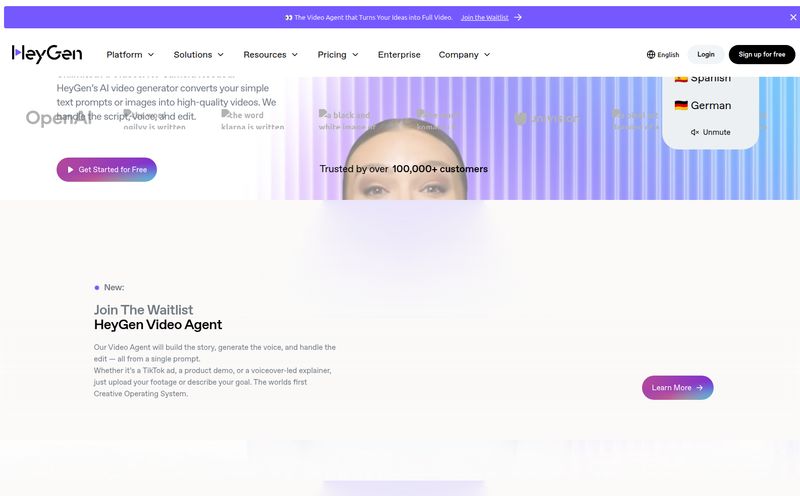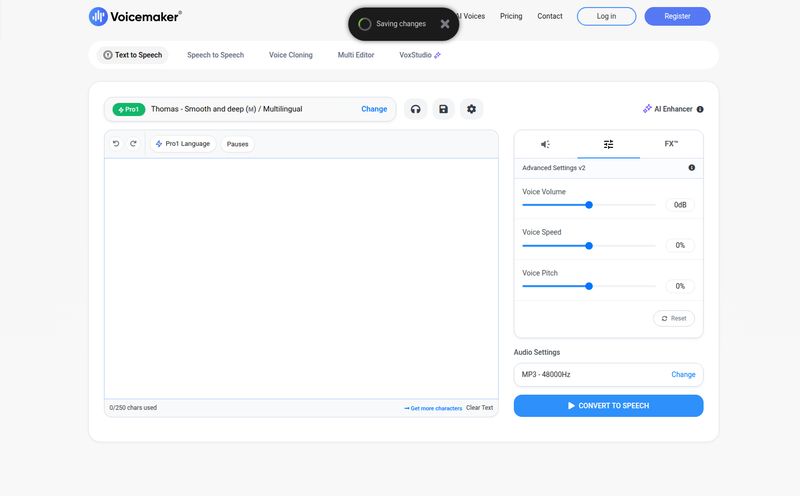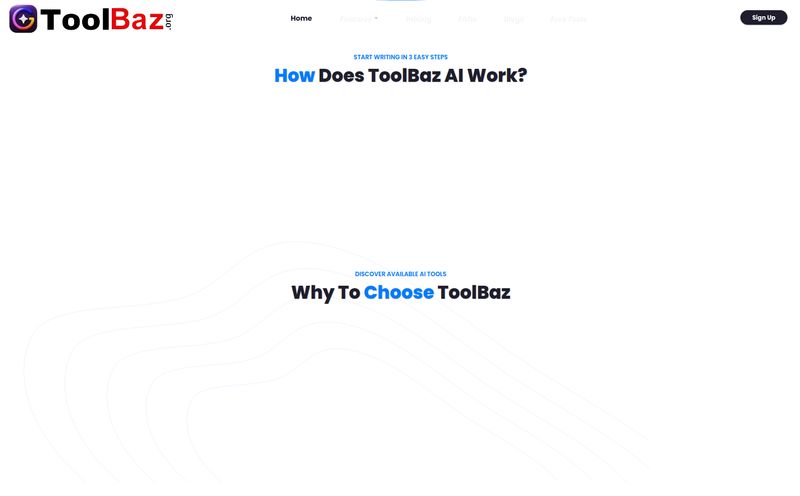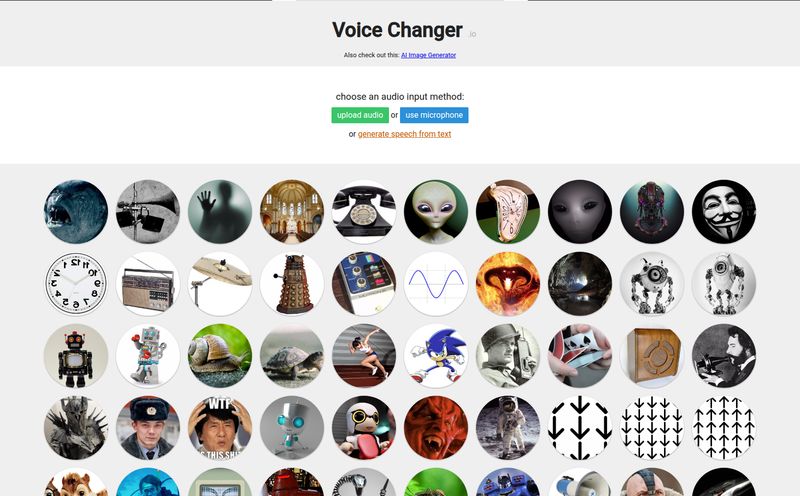As content creators, we're always on the hunt for tools that make our lives easier without draining our wallets. One of the biggest time-sinks? Audio. Whether it’s a quick voiceover for a YouTube short, an audio version of a blog post for accessibility, or just prototyping a script, getting decent-sounding speech can be a pain. You either have to get over your own voice-shyness (still working on that), hire a voice actor (cha-ching), or brave the uncanny valley of text-to-speech (TTS) tools.
I've stumbled down my fair share of TTS rabbit holes, and let me tell you, most 'free' tools sound like a robot who's had one too many espressos. It's often clunky, monotonous, and just… off. So, when I came across TTSynth.com, a free online TTS maker, my curiosity was piqued. Another contender in the ring? I had to give it a spin.
So, What's the Deal with TTSynth?
In a nutshell, TTSynth is exactly what it says on the tin: a free, web-based tool that turns your text into speech. You type or paste in your words, pick a voice and language, and it spits out a downloadable MP3 file. The idea is to provide natural-sounding voices for anything from audiobooks and presentations to e-learning modules. No software to install, no complicated sign-up process to start. It’s built for speed and simplicity. But does it actually deliver?
First Impressions: A Surprisingly Clean Slate
Landing on the TTSynth homepage is… refreshing. It’s incredibly minimalist. You're greeted with a big, clean text box, a dropdown menu for languages, and a button. That’s it. No pop-ups, no flashy banners, no begging for your email address right out of the gate. I love that. In an age of cluttered UIs, this is a breath of fresh air.
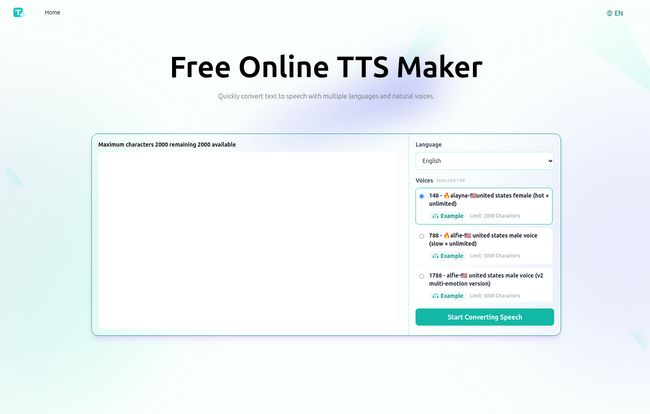
Visit TTSynth.com
The process is dead simple. I grabbed a paragraph from one of my old blog posts, pasted it into the box (it shows a 2000 character limit, which is decent for quick jobs), and went to explore the voices. And this is where things got a little quirky. The voice names are… interesting. Instead of the usual 'Aria' or 'David', I saw things like "en-us-home-Wounded States Female (bot)" and "zho-cn-offline-cn united states male voice". A bit of a strange naming convention, but hey, I'm not here for names, I'm here for performance. I picked a voice, hit "Start Converting Speech," and within seconds, I had an MP3 file ready to go.
The Good Stuff: What I Actually Liked
After playing around for a bit, a few things really stood out. First and foremost, it’s genuinely free for basic use. You can hop on the site and generate audio without pulling out your credit card. That’s a huge win in my book. The audio quality for a free tool is also surprisingly high. It’s not quite at the level of a premium AI voice from a major tech company, but it's miles ahead of the robotic Stephen Hawking-esque voices of yesteryear. The cadence is pretty natural, and the pronunciation is solid for most standard text.
I was also impressed with the range of languages and accents available. It’s not just a handful of English options. Having different choices is great for anyone creating content for a global audience. The sheer ease of use can't be overstated either. It's the kind of tool you can have open in a browser tab and use on the fly. It's become my go-to for hearing how a script flows without having to read it aloud myself for the tenth time.
The Not-So-Good Stuff: A Few Wrinkles
Of course, no tool is perfect, especially not a free one. The most obvious limitation is the 2000-character limit. This makes it unsuitable for long-form content like a full audiobook chapter unless you want to spend your afternoon stitching dozens of MP3 files together. It's clearly designed for short snippets.
There's also the mention of "advanced features" possibly requiring an upgrade. This sent me looking for a pricing page, which… well, it led to a 404 error page. This could mean a few things. Maybe they're in the middle of updating the site, or maybe the premium tier is on the back burner. For now, what you see is what you get, and any advanced features remain a mystery. And like any online tool where you're pasting information, you should be mindful of data security. I wouldn't paste anything super sensitive into it, but for general scripts and content, it's a non-issue for me.
Who is This Tool Really For?
So, who gets the most out of TTSynth? I see a few key groups:
- Content Creators on a Budget: YouTubers, TikTokers, and podcasters who need quick, clean voiceovers for short segments or social media clips.
- Students and Researchers: It's perfect for converting study notes or articles into audio files to listen to on the go. A great way to multitask your learning.
- Developers & UI/UX Designers: Need to quickly prototype a feature with voice feedback? This is a much faster option than recording temp tracks yourself.
- Accessibility Advocates: Anyone looking to quickly create an audio version of a short text to make content more accessible to visually impaired users.
It’s the Swiss Army knife for quick audio jobs, not the entire professional sound studio. And for many of us, that's exactly what we need.
A Quick Word on TTS and Your SEO
As an SEO guy, I can't help but connect this back to traffic and rankings. Adding an audio version of your articles (using a tool like this) can be a smart move. Why? It improves user experience and accessibility. Someone might listen to your 1,500-word blog post while they're driving or doing chores. This increases their 'time on page'—a metric that search engines like Google smile upon. Plus, making your content accessible is just good practice, and Google has been pretty clear about prioritizing accessible web design. It's a small effort for a potentially nice reward.
Frequently Asked Questions About TTSynth
Is TTSynth really free to use?
Yes, the basic service on their website is free. You can convert text up to 2000 characters and download the MP3 without any cost. There may be premium features in the future, but the core tool is free.
What kind of languages and voices are available?
TTSynth supports a variety of languages and voices, including different accents for English (US, UK), Chinese, and more. The best way to see the full list is to check the dropdown menu on their site, as it's likely to be updated.
Can I use the audio generated by TTSynth for commercial purposes?
This is a bit of a grey area, and the website doesn't provide a clear terms of service on this. For personal projects, studying, or internal business use, it's likely fine. For commercial use, like in a monetized YouTube video, it's always best to be cautious with free tools. I'd recommend reaching out to them for clarification if possible.
How natural does the speech actually sound?
It's surprisingly good for a free tool! It's not perfect, and some complex words or names might sound a bit off, but for general text, the cadence and tone are quite natural-sounding and very listenable.
Is there a software I need to download?
Nope. TTSynth is a fully online tool. Everything is done right in your web browser, which makes it super convenient and accessible from any device with an internet connection.
My Final Verdict
So, is TTSynth a game-changer? For massive, professional-grade projects, probably not. You'll still want to look at premium, dedicated solutions for that. But for the everyday creator, student, or professional who just needs to turn some text into decent-sounding audio right now without any fuss? It's a fantastic little tool to have in your back pocket. It's simple, it’s fast, and its free.
It does what it promises with a no-nonsense approach, and in the noisy world of online tools, that's something I can definitely get behind. Give it a try next time you need a quick voiceover; I think you'll be pleasantly surprised.
Reference and Sources
- TTSynth Homepage: https://ttsynth.com/
- Google's Accessibility Blog: Five ways to get started with digital accessibility
